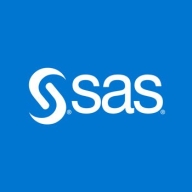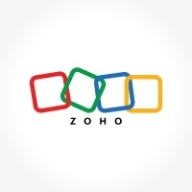

SAS Visual Analytics and Zoho Analytics are competitive players in the data analysis and reporting industry, with Zoho gaining an edge due to its cost-effectiveness and user accessibility.
Features: SAS Visual Analytics is known for its comprehensive ecosystem that includes seamless data management, OLAP cubes, and machine learning capabilities, facilitating both large database management and advanced analytics. In contrast, Zoho Analytics provides robust data integration and allows dashboard creation without a desktop application, making it accessible to users of various technical levels.
Room for Improvement: SAS Visual Analytics faces issues like high cost and a complex installation process, along with performance concerns in data management and integration. Zoho Analytics, while user-friendly, could improve by adding advanced statistical functions, varied graph styles, and enhancing its query language and graphical options.
Ease of Deployment and Customer Service: SAS Visual Analytics typically supports on-premises deployment, sometimes offering hybrid cloud options with mixed customer service reviews depending on location. Conversely, Zoho Analytics excels with various cloud deployment options and generally positive customer service feedback, highlighting its cloud flexibility.
Pricing and ROI: SAS Visual Analytics is perceived as expensive, particularly for small businesses, with additional costs for advanced features and a complex licensing model. Many users compare it unfavorably to more affordable options like Zoho Analytics. Zoho is commended for its competitive pricing and flexible plans, providing significant value for organizations mindful of their budget.
The enterprise subscription offers more benefits, ensuring valuable outcomes.
The integration with Zoho People is particularly important because I can access real-time data at any time, including what's happening in the last minute.
After incorporating Zoho Analytics, now all our decisions come from its reviews.
Any time I've integrated customer data using Zoho, I've received great feedback and referrals, and Zoho has gotten me referrals and more customers.
They provide callbacks to ensure clarity and resolution of any queries.
The support team doesn't have full awareness of the system capabilities.
Zoho support provides assistance through live chat to guide us.
If you need help with any issue you face, you can directly call them.
Zoho Analytics can easily adapt to our needs when they grow, and you don't need much knowledge to adapt it; even basic Excel knowledge is sufficient.
You can utilize URL features to redirect users to their records in Zoho CRM or Zoho Desk with just a click.
Zoho Analytics is scalable.
SAS Visual Analytics is stable and manages data effectively without crashing.
A major missing feature compared to Power BI is the ability to create multiple DAX measures or row-level context, which would be useful for showing custom profit and loss statements.
The stability and reliability of Zoho Analytics have been good over time.
The stability and reliability of the product is crucial for optimal performance.
In terms of configuration, I would like to see AI capabilities since many applications are now integrating AI.
The collaborative features of Zoho Analytics have faced one issue: they have tried to reduce the sync time with most Zoho applications, but even with CRM, the sync still takes one hour.
While Power BI uses Power Query, an intuitive and powerful tool that allows data manipulation in any way, Zoho Analytics has limitations.
Having to pay for 25 users when only 11 are needed creates an issue with the pricing structure.
The annual subscription cost of Zoho Analytics is equivalent to about half of the monthly cost of tools such as Tableau or Power BI.
The pricing for Zoho Analytics is actually cheaper than the competitors for the kind of service they provide.
The ability to query information from our Excel data into SAS to view specific data is invaluable.
The AI called Zia in Zoho Analytics is extremely useful. Whenever I build a chart or dashboard, I can generate a summary of insights using this AI tool, which is very convenient for both leadership and manager level teams to understand the data concepts.
The best feature is that in the same tool, we can use SQL and business intelligence capabilities.
Regarding integration capabilities, I have found Zoho Analytics' 100+ integrations very effective in consolidating data from various sources.
| Product | Market Share (%) |
|---|---|
| Zoho Analytics | 1.6% |
| SAS Visual Analytics | 3.4% |
| Other | 95.0% |


| Company Size | Count |
|---|---|
| Small Business | 13 |
| Midsize Enterprise | 8 |
| Large Enterprise | 19 |
| Company Size | Count |
|---|---|
| Small Business | 29 |
| Midsize Enterprise | 4 |
| Large Enterprise | 4 |
SAS Visual Analytics is a data visualization tool that is used for reporting, data exploration, and analytics. The solution enables users - even those without advanced analytical skills - to understand and examine patterns, trends, and relationships in data. SAS Visual Analytics makes it easy to create and share reports and dashboards that monitor business performance. By using the solution, users can handle, understand, and analyze their data in both past and present fields, as well as influence vital factors for future changes. SAS Visual Analytics is most suitable for larger companies with complex needs.
SAS Visual Analytics Features
SAS Visual Analytics has many valuable key features. Some of the most useful ones include:
SAS Visual Analytics Benefits
There are many benefits to implementing SAS Visual Analytics. Some of the biggest advantages the solution offers include:
Reviews from Real Users
Below are some reviews and helpful feedback written by PeerSpot users currently using the SAS Visual Analytics solution.
A Senior Manager at a consultancy says, “The solution is very stable. The scalability is good. The usability is quite good. It's quite easy to learn and to progress with SAS from an end-user perspective.
PeerSpot user Robert H., Co-owner at Hecht und Heck GmbH, comments, “What I really love about the software is that I have never struggled in implementing it for complex business requirements. It is good for highly sophisticated and specialized statistics in the areas that some people tend to call artificial intelligence. It is used for everything that involves visual presentation and analysis of highly sophisticated statistics for forecasting and other purposes.
Andrea D., Chief Technical Officer at Value Partners, explains, “The best feature is that SAS is not a single BI tool. Rather, it is part of an ecosystem of tools, such as tools that help a user to develop artificial intelligence, algorithms, and so on. SAS is an ecosystem. It's an ecosystem of products. We've found the product to be stable and reliable. The scalability is good.”
Zoho Reports is a powerful, easy-to-use and highly scalable cloud-based reporting and business intelligence platform for small to medium-sized businesses. Its flexible pay-as-you-go pricing model and scope for customization allow businesses to tailor it to their unique needs.
We monitor all Data Visualization reviews to prevent fraudulent reviews and keep review quality high. We do not post reviews by company employees or direct competitors. We validate each review for authenticity via cross-reference with LinkedIn, and personal follow-up with the reviewer when necessary.